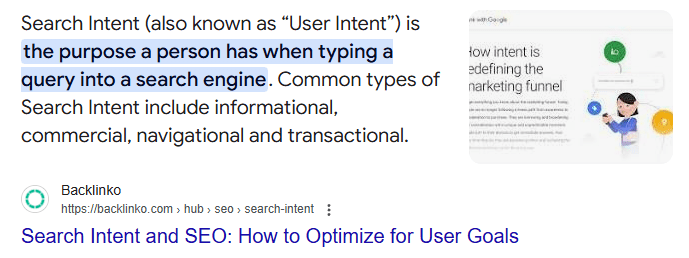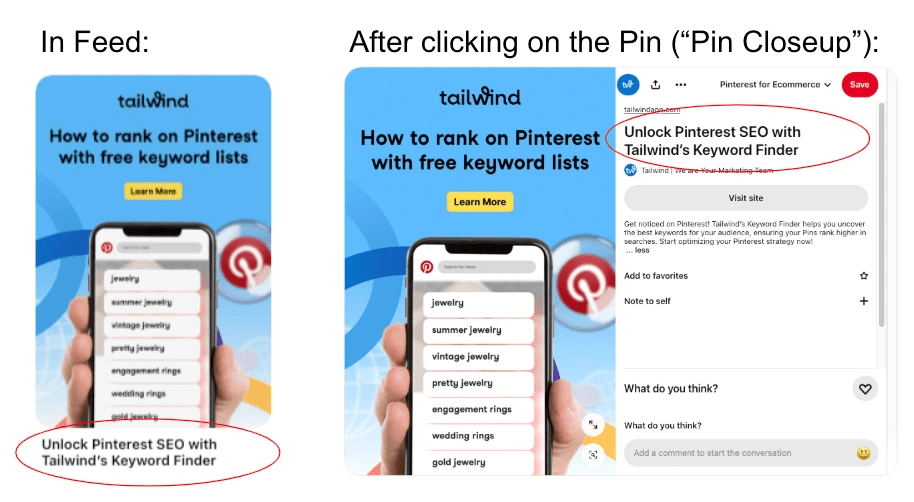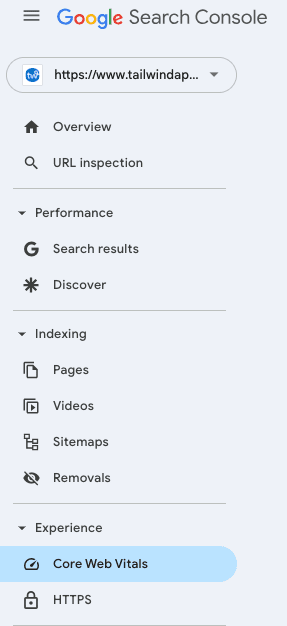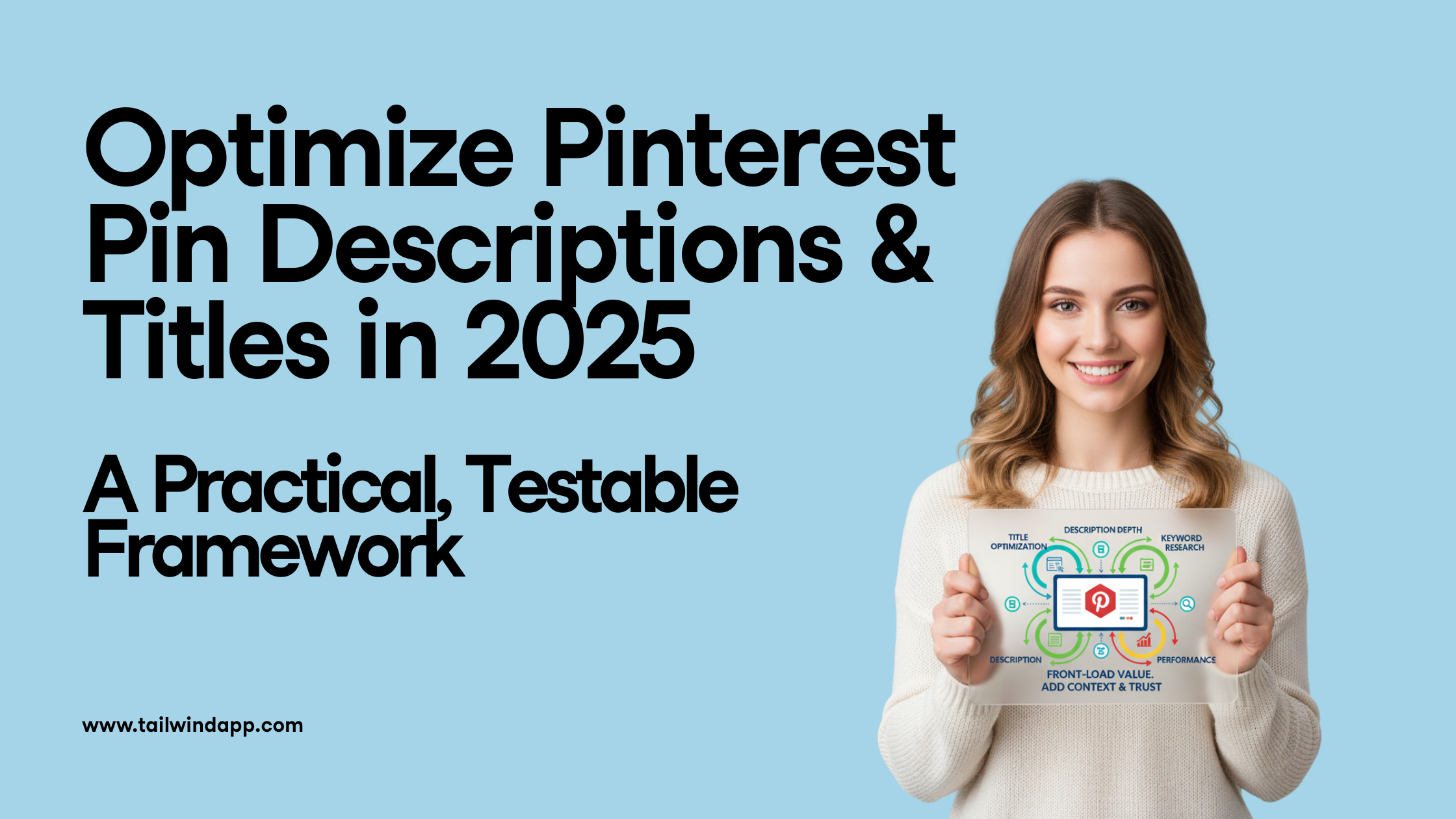
Mastering multiple search platforms is essential for DTC brands looking to maximize their online visibility.
While Google remains the dominant search engine, Pinterest has evolved into a powerful visual discovery engine with its own unique search ecosystem. Understanding the differences between Pinterest SEO and Google SEO can help your brand create more effective strategies for both platforms.
At Tailwind, we’ve helped thousands of brands optimize their Pinterest presence while maintaining strong Google rankings. Let’s dive into the key differences and strategic approaches for each platform.
Understanding Platform Search Intent

What is Pinterest SEO and how do you do it? Remember, the foundation of effective SEO on any platform, including Pinterest, begins with understanding user intent, i.e., why people are searching and what they hope to find.
Pinterest User Intent Patterns
Pinterest users typically visit the platform with inspiration and discovery in mind. They’re not necessarily looking to make an immediate purchase or find a specific answer. Instead, they’re:
- Seeking visual inspiration for projects, styles, or ideas
- Planning for future purchases or events (often weeks or months ahead)
- Exploring options without a specific product in mind
- Building collections of ideas that reflect personal interests and aspirations
- Discovering new brands and products that align with their aesthetic preferences
A Pinterest user searching “spring kitchen ideas” is likely in an early-stage planning mode, collecting visual inspiration that might influence future purchasing decisions.
Google User Intent Categories
Google users, by contrast, often have more specific and immediate needs:
- Navigational: Looking for a specific website (e.g., “Tailwind app login”)
- Informational: Seeking answers to questions (“how to increase Pinterest traffic”)
- Transactional: Ready to make immediate purchases (“buy organic cotton t-shirts”)
- Commercial investigation: Comparing options before buying (“best skin care brands for sensitive skin”)
- Local: Finding nearby businesses or services (“coffee shops near me”)
A Google user searching “spring kitchen renovation cost calculator” has a much more specific informational need than the Pinterest user browsing for inspiration.
Content Optimization Strategies
Understanding these intent differences shapes how you should optimize content for each platform.
Pinterest Visual Content Requirements
As a visual discovery platform, Pinterest’s content optimization begins with images:
- Optimal dimensions: Vertical Pins with 2:3 aspect ratios (1000x1500px) typically perform best, maximizing screen real estate on mobile
- Visual clarity: Clear, high-quality images that communicate the core concept even at thumbnail size
- Color psychology: Pins with dominant colors that align with your brand and seasonal themes tend to stand out
- Text overlays: Strategic text on images can increase engagement but should be limited to 1-2 lines for readability
- Branding elements: Subtle but consistent branding helps with recognition as users encounter your content repeatedly
Our data at Tailwind shows that Pins with clear visual hierarchy and minimal clutter consistently outperform visually complex images.
Pinterest Text Optimization Techniques
While visuals dominate, text elements matter significantly for Pinterest searchability:
- Pin titles: Front-load with relevant keywords. Shorter titles may be better. Only the first 35-45 characters are visible, and 60% of the most viral Pins in a large research study had Pin Titles of 25 characters or less.

- Descriptions: Use natural language with relevant keywords, focusing on benefits and applications rather than technical details
- Alt text: Include descriptive keywords while maintaining accessibility for visually impaired users
- Board organization: Create topic-specific boards with keyword-rich titles and descriptions
- Fresh content: Regular uploads of new content signal relevance to the Pinterest algorithm
Keywords on Pinterest should capture aspiration and inspiration. Instead of “blue cotton shirt”, think “casual summer style ideas for beach vacations”.
Google On-Page SEO Elements
Google’s text-centric search requires different optimization approaches:
- Title tags: Include target keywords within the first 50-60 characters, creating compelling clickable headlines
- Meta descriptions: Write keyword-rich, benefit-focused summaries under 155 characters
- Header hierarchy: Structure content with H1, H2, and H3 tags that include relevant keywords
- Comprehensive content: Provide in-depth information that thoroughly answers user questions
- Internal linking: Connect related content within your site with descriptive anchor text
- Schema markup: Implement structured data to help Google understand your content type
Google rewards content that demonstrates expertise, authoritativeness, and trustworthiness (E-A-T), particularly for topics related to health, finance, and major life decisions.
Google Technical SEO Requirements
Google places significant emphasis on technical performance:
- Page speed: Fast-loading pages receive preferential treatment, with Core Web Vitals now serving as ranking signals
- Mobile optimization: Responsive design that works seamlessly across all devices is non-negotiable
- Secure connection: HTTPS is a must-have for ranking well
- Indexation control: Proper use of robots.txt, XML sitemaps, and canonical tags
- URL structure: Clean, descriptive URLs that contain relevant keywords
Algorithm Ranking Factors
Both platforms use complex algorithms to determine which content to show users, but they prioritize different signals.
Pinterest Ranking Signals
Pinterest’s algorithm considers:
- Pin engagement: Saves, clicks, closeups, and comments signal content value
- Topical relevance: How well your content matches search queries and trending topics
- Freshness: Recently published content often receives a visibility boost
- User signals: Past interactions help Pinterest determine what content to show each user
- Visual similarity: Pinterest’s visual search capabilities match aesthetically similar content
User behavior in the first 24-48 hours after publishing significantly impacts a Pin’s long-term performance. Pins that receive strong early engagement often continue to distribute in search results for months or even years.
Google Ranking Determinants
Google’s algorithm considers:
- Content relevance: How well your content matches search intent
- Backlink profile: Quality and quantity of external sites linking to your content
- User experience signals: Click-through rates, time on page, and bounce rates
- Page experience: Core Web Vitals and mobile-friendliness
- E-A-T factors: Signals that demonstrate expertise and trustworthiness
- BERT and AI understanding: Semantic understanding of content beyond keywords
While Pinterest content can maintain visibility for years with minimal updates, Google increasingly favors fresh, regularly updated content for many query types.
Keyword Research Methodologies
Effective keyword research varies significantly between platforms.
Pinterest Keyword Discovery Techniques
For Pinterest, focus on:
- Guided search suggestions: Type a base keyword and note Pinterest’s autocomplete suggestions. See these suggestions for “cozy fall outfit ideas”. Each can be combined with the base search term. For example: Casual, cozy fall outfit ideas, or cozy fall outfit ideas for a baby shower.

- Related terms: Analyze what terms Pinterest shows as related to your initial search
- Trend data: Use Pinterest Trends to identify seasonal interest patterns
- Competitor analysis: Study high-performing Pins in your niche for keyword insights
- Pinterest-specific tools: Utilize Tailwind’s Keyword Research tool to identify high-opportunity terms
Pinterest keywords tend to be more conversational and visual in nature: “cozy fall outfit ideas” rather than “women’s autumn apparel”.
Google Keyword Research Approaches
For Google, prioritize:
- Search volume and competition: Balance traffic potential against competition difficulty
- Featured snippet opportunities: Identify questions you can answer concisely
- Long-tail variations: Target specific, lower-competition phrases related to your core topics
- Intent matching: Align content with navigational, informational, or transactional intent
- Entity optimization: Focus on becoming an authority for key topics in your niche
Analytics and Performance Measurement
Measuring success requires different metrics for each platform.
Pinterest Success Metrics
On Pinterest, track:
- Impression-to-save ratio: How often people save your content after seeing it
- Click-through rate: The percentage of impressions that result in website visits
- Downstream actions: Conversions that occur after Pinterest traffic arrives
- Audience growth: Increases in followers and engaged users
- Search visibility: The number of search terms driving traffic to your Pins
Many businesses find that Pinterest traffic has a longer consideration window but higher average order value compared to other social channels.
Google Performance Indicators
For Google, monitor:
- Organic traffic: Visitors arriving through non-paid search results
- SERP positioning: Rankings for target keywords
- Click-through rates: The percentage of searchers who click your result
- Page-level metrics: Time on page, pages per session, and bounce rates
- Conversion data: How search traffic performs against your business goals
Cross-Platform Content Strategy
The most efficient approach leverages content across both platforms with strategic modifications.
Content Adaptation Techniques
To maximize efficiency:
- Blog-to-Pin transformation: Create multiple Pinterest-optimized images for each blog post
Pro Tip:
Any time you write a new blog post, plug its URL into SmartPin. Tailwind will automatically create a fresh Pin for that blog post every week! All you have to do is approve and schedule.
- Visual asset modification: Adapt hero images from blog posts into vertical Pin formats
- Cross-promotion: Use Pinterest to drive traffic to SEO-optimized content and vice versa
- Content repurposing: Transform comprehensive Google-focused content into bite-sized visual content for Pinterest
- Consistent branding: Maintain visual and tonal consistency across platforms while adapting to platform-specific best practices
Synergistic Content Planning
Smart brands develop content calendars that:
- Leverage Pinterest for trend spotting: Pinterest trends often precede Google search trends
- Use Google data for Pinterest strategy: Identify high-value Google keywords that can be adapted for Pinterest
- Coordinate seasonal planning: Align content timing with platform-specific lead times
- Integrate audience insights: Apply learnings from each platform to refine targeting on the other
- Create content clusters: Develop comprehensive topic coverage that works across platforms
Implementation Roadmap
Ready to optimize your presence on both platforms? Here’s how to start:
Pinterest SEO Audit Framework
- Evaluate account health: Review overall metrics and identify underperforming areas
- Analyze board organization: Ensure logical structure with keyword-rich titles and descriptions
- Assess Pin performance: Identify your highest and lowest performing Pins to understand what works
- Conduct keyword gap analysis: Find opportunities for new keyword targeting
- Review Pin design templates: Ensure your visual assets follow platform best practices
Google SEO Audit Structure
- Technical SEO review: Identify and fix crawlability, indexation, and speed issues. Google Search Console — particularly the Core Web Vitals section — is a great place to find this information:

- Content quality assessment: Evaluate how well your content meets user needs
- Backlink profile analysis: Review link quantity, quality, and relevance
- User experience evaluation: Test site usability across devices
- SERP opportunity identification: Find featured snippet and rich result opportunities
Conclusion: Balancing Platform Priorities
While Pinterest and Google operate differently, successful DTC brands find synergies between these platforms. Pinterest often introduces consumers to your brand and products early in their journey, while Google helps them find specific information as they move toward purchase.
The most efficient strategy maintains platform-specific optimization while creating workflows that allow content to be adapted rather than created from scratch for each channel. By understanding the unique aspects of Pinterest SEO and Google SEO, you can create content that performs well across both ecosystems, maximizing your brand’s digital visibility and driving more qualified traffic to your products.
Ready to take your Pinterest strategy to the next level? Tailwind’s scheduling, analytics, and optimization tools make it easy to improve your Pinterest SEO while maintaining a strong presence on Google. Start today at Tailwindapp.com.







